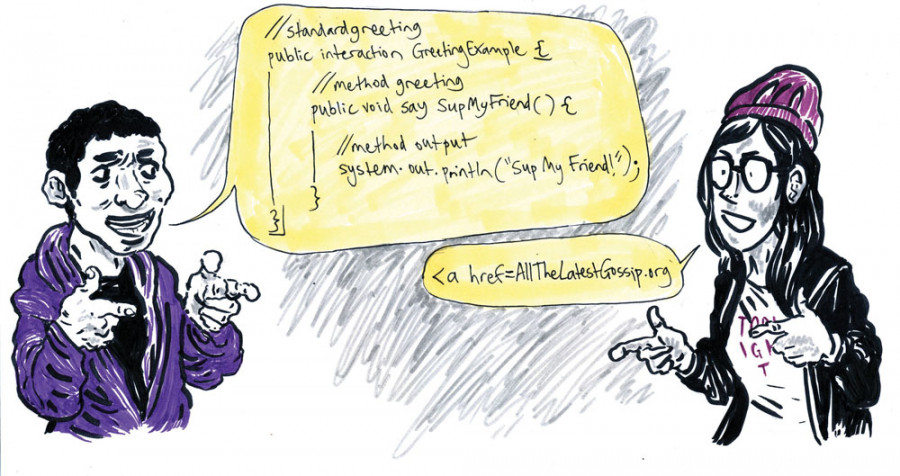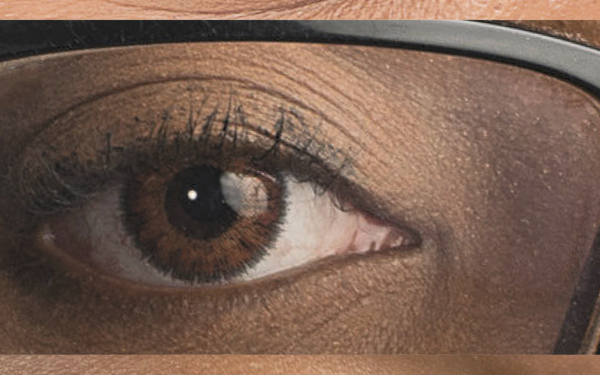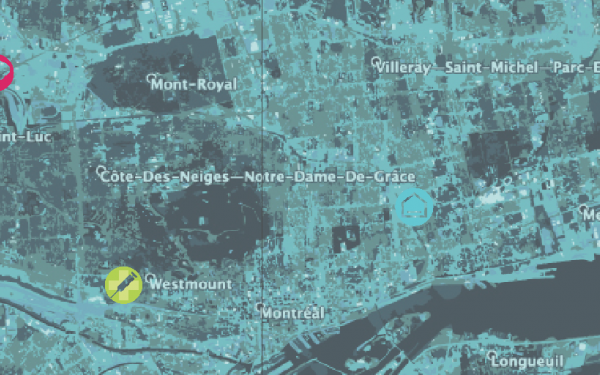How To Read The Web
A Breakdown of Some of Today’s Popular Coding Languages
Programming languages make up the Matrix that is behind most new technologies.
They are ubiquitous and yet we often have no idea they are there. Like any language, they are made up of a series of word combinations (often called tags) that produce the actual words, images and interactive websites on our screens.
Also like any language, they are constantly being updated in order to be more productive and to support changing technologies.
Unlike the languages we speak though, there are people and even companies like Google and Microsoft behind every language, supporting the cost of keeping them alive. Those not owned by large companies survive off donations and individuals willing to work for free, similar to Wikipedia.
Here are some of the most popular coding languages today:
1. HTML + CSS
HTML (HyperText Markup Language) and CSS (Cascading Style Sheets) are presentation languages, meaning they determine the layout of a webpage. They’re almost always used together and are behind most websites. Plus, they’re the easiest to learn as their structure resembles English.
HTML was invented by none other than Tim Berners-Lee, co-developer of the World Wide Web, around 1990, when the Internet was making its first steps toward the mainstream. HTML is used mainly to determine structure and place data (text, tables, etc.). CSS was designed five or six years later, in 1996, to determine the alignment, text, background colour, font and other characteristics of content on a webpage.
2. JavaScript
JavaScript is another presentation language that is widely used. It was designed by Brendan Eich in 1995 and is supported by tech companies including Mozilla, creator of the Firefox browser. It’s largely influenced by C and Java languages (described below) and allows for interactive webpages much like the Pulitzer prize-winning Snowfall feature by The New York Times. It’s also used in video games now and even in new smartphones like the upcoming Firefox phone.
3. PHP
Used for both web-programming and general-purpose programming, PHP was designed in 1994 by Rasmus Lerdorf and is one of the most popular programming languages because it isn’t too specialized. Most web software, like Wordpress, are written in PHP. And because most web hosts, like GoDaddy, also use PHP, employers usually look for coders who know it well.
4. Java
Created by James Gosling in 1995, Java is considered by many as the foundation of corporate computing. It’s a very general and enterprise-oriented language that typically isn’t used for web but is used for anything else, from Blu-Ray players to banking systems. It’s also used to program operating systems by the likes of Windows, Mac and Linux.
5. C
C is the grandfather of all high-level languages like Java, Javascript, C++ (a very updated version of C) and the near-obsolete Perl. When computers were first invented in the ‘50s and ‘60s, developers had to do everything by hand, including complicated calculations in order for their machines to have a purpose. C was the link between the machine and the programmer. High-level language abstracts lower-level machine code, rendering code more programmer-friendly. It’s powerful because it allows for the creation of fast application on all platforms and is also behind all operating systems and Adobe programs.
6. Objective-C
Objective-C is one of the early programming languages to resemble C. It was created in 1983 by Brad Cox and Tom Love. It is behind all iPhone applications.
7. Python
Python is another high-level language like Java and C, but is more readable and learnable. It’s often used in science research programs for it ease of use with mathematics libraries, as it can calculate very large numbers quickly. It was originally published in 1991 and is now invested in heavily by Google, so it’s bound to stick around for a while. Image-sharing applications and websites like Instagram and Pinterest use Python.
8. Ruby
Essentially the equivalent of Python—the two could be compared to Windows and Mac—Ruby was published in 1995 and was designed by Japanese developer Yukihiro Matsumoto. Its popularity stems from a framework called “Ruby on Rails” which facilitates the creation of websites coded in Ruby. These include include Shopify, Groupon and parts of Twitter, which eventually switched to Java.
9. C#
Another offshoot of grandpa C, C# (pronounced “C-sharp”) is a general-purpose programming language used to write Microsoft programs like Xbox and Windows. It was created in 2000 by Microsoft.







